When I survey the landscape of capital efficient ETFs I’m hard-pressed to find a fund provider that has made a bigger impact in recent months than the Return Stacking crew.
In 2023, they launched three unique products which all adhere to a formula of $1 invested gives you exposure to 100% A plus 100% B.

RSBT ETF = 100% Bonds + 100% Managed Futures (Trend)
RSST ETF = 100% US Equities + 100% Managed (Trend)
RSSB ETF = 100% Global Equities + 100% Bonds (US Treasury Futures)
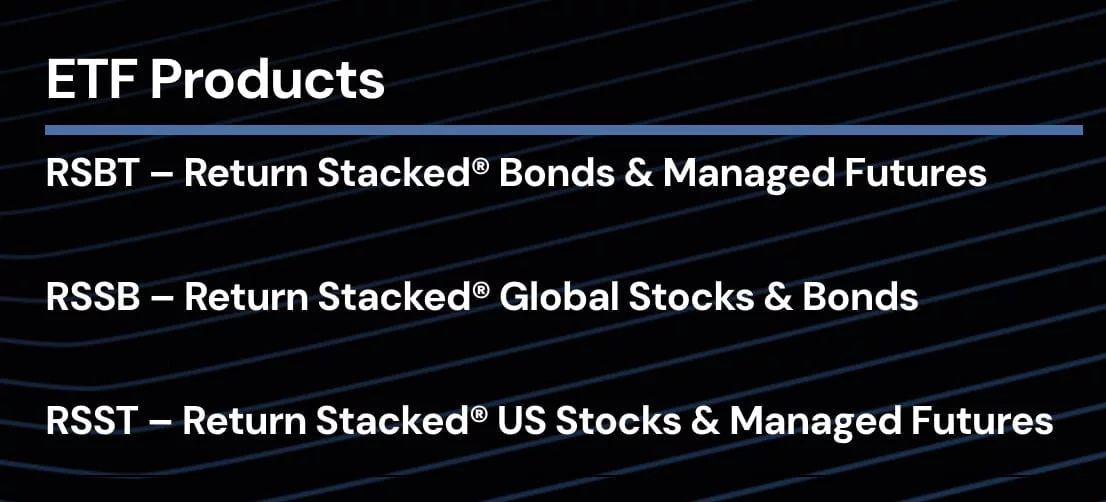
For a while it appeared that their Global Stocks and Bonds ETF was going to be a 90/60 fund, but I was thrilled on a personal level (and I think it was also a great decision on their part) that it distinguished itself from another capital efficient trio of 90/60 equity plus bonds products from WisdomTree.
NTSX ETF = 90% US Equities / 60% Bonds
NTSI ETF = 90% Int-Dev Equities / 60% Bonds
NTSE ETF = 90% Emerging Equities / 60% Bonds
So what is different and unique about RSSB ETF?
- Global Equities
- More Capital Efficient
- Better Bang For Your Capital Efficient Buck
It’s crucial to zoom in specifically on point number 3.

If maximum capital efficiency is your primary goal to create space in your portfolio for other asset classes and strategies (it sure is for me) you’d need to commit 67% of your resources with NTS(X,I,E) to accomplish the mandate of a 60/40 portfolio.
In other words, 67% of NTS(X,I,E) = 60/40 portfolio exposure.
You’ve got 33% resources leftover for something else.
Don’t get me wrong, that’s not too shabby at all!
However, look at what we can potentially do with 67% of our resources allocated to the following:
40% RSSB – 100% Equities / 100% Bonds
20% RSST – 100% Equities / 100% Managed Futures (Trend)
7% GDE – 90% Equities / 90% Gold Futures
We’re considerably more capital efficient with this trio:
66.3% Equities
40% Bonds
20% Managed Futures (Trend)
6.3 % Gold
Not only do we have a 60/40 (plus 6.3% additional equities) but we’ve also started to carve out space for an alternative sleeve with both managed futures and gold.
With that 67% space we’ve built ourselves a balanced portfolio (60/40) and we’ve efficiently added two uncorrelated alternatives to the mix.
You’ve gotta like that!

In many regards it reminds me of the movie scene where Captain Richard Phillips is taken hostage by Somali Pirates:
RSSB to NTS(X,I,E): “Look at me. Look at me. I’m the Captain now!”
source: Movieclips on YouTube

Indeed, if you’re seeking maximum capital efficiency as an investor there is a new captain aboard the equities plus bonds vessel.
Its name is Return Stacked Global Stocks & Bonds ETF.
AKA RSSB ETF.
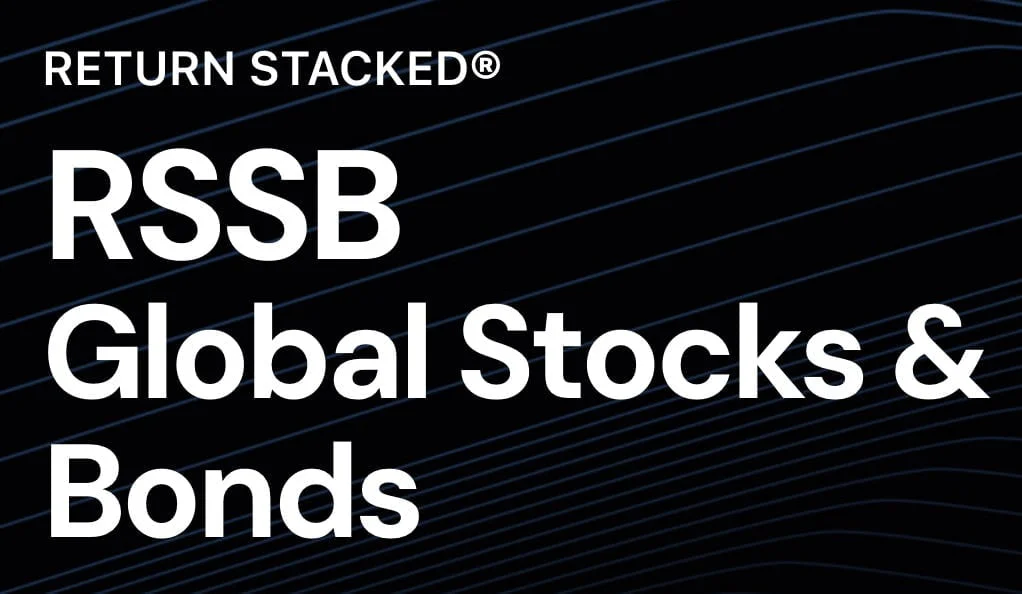
Review of RSSB ETF : Reviewing Return Stacked Global Stocks & Bonds ETF
Hey guys! Here is the part where I mention I’m a travel blogger, vlogger and content creator! This investing opinion blog post ETF Review is entirely for entertainment purposes only. There could be considerable errors in the data I gathered. This is not financial advice. Do your own due diligence and research. Consult with a financial advisor.
RSSB ETF Overview, Holdings and Info
The investment case for “Return Stacked Global Stocks and Bonds” has been laid out succinctly by the folks over at Return Stacked ETFs: (source: fund landing page)
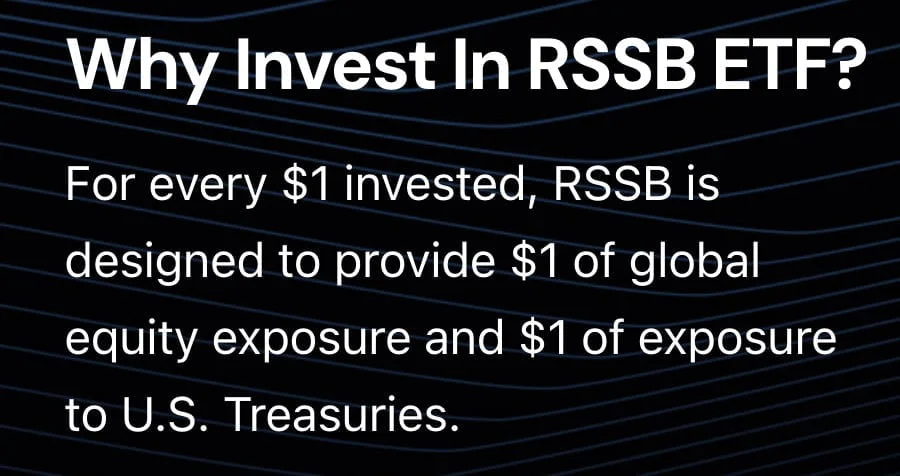


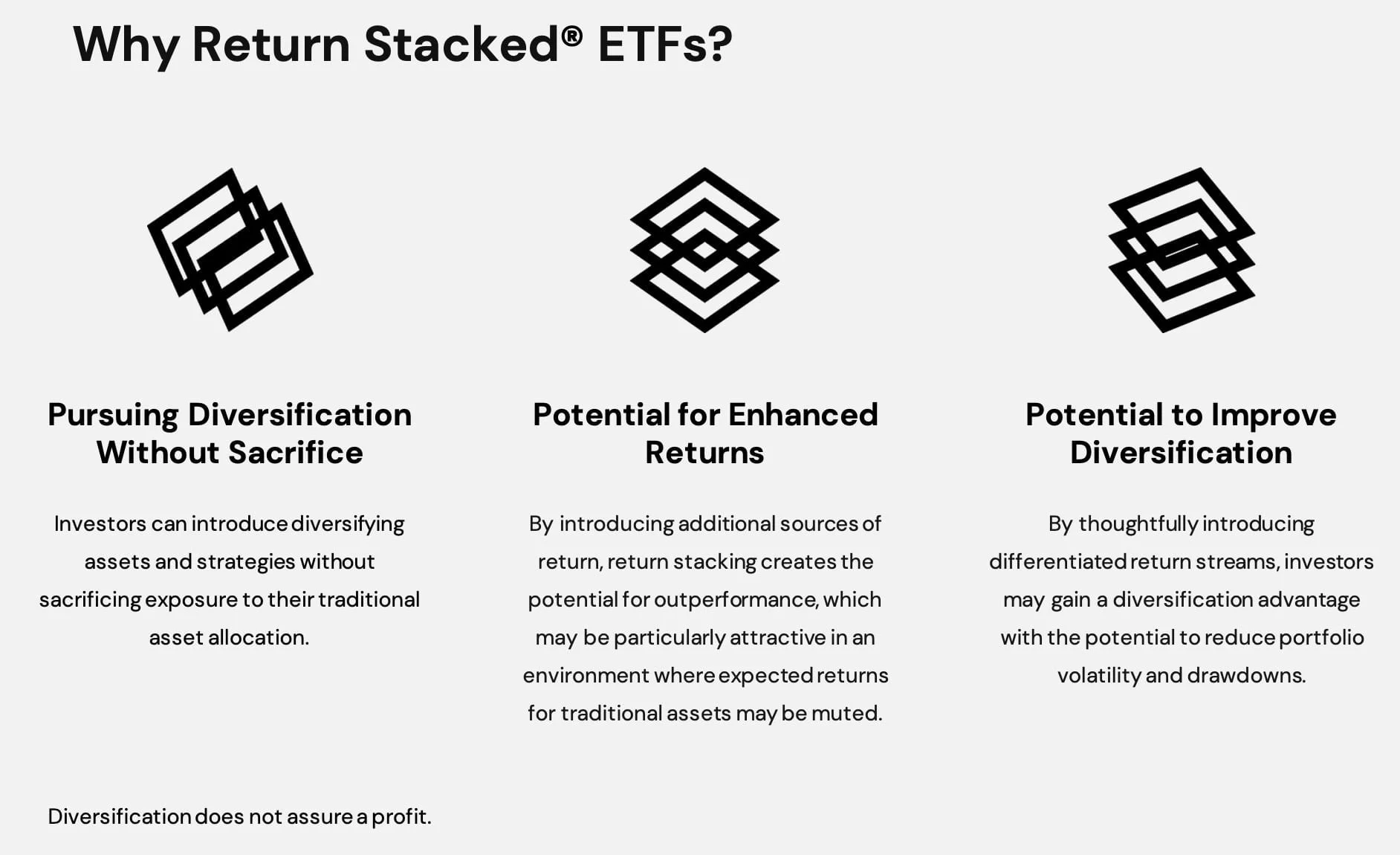
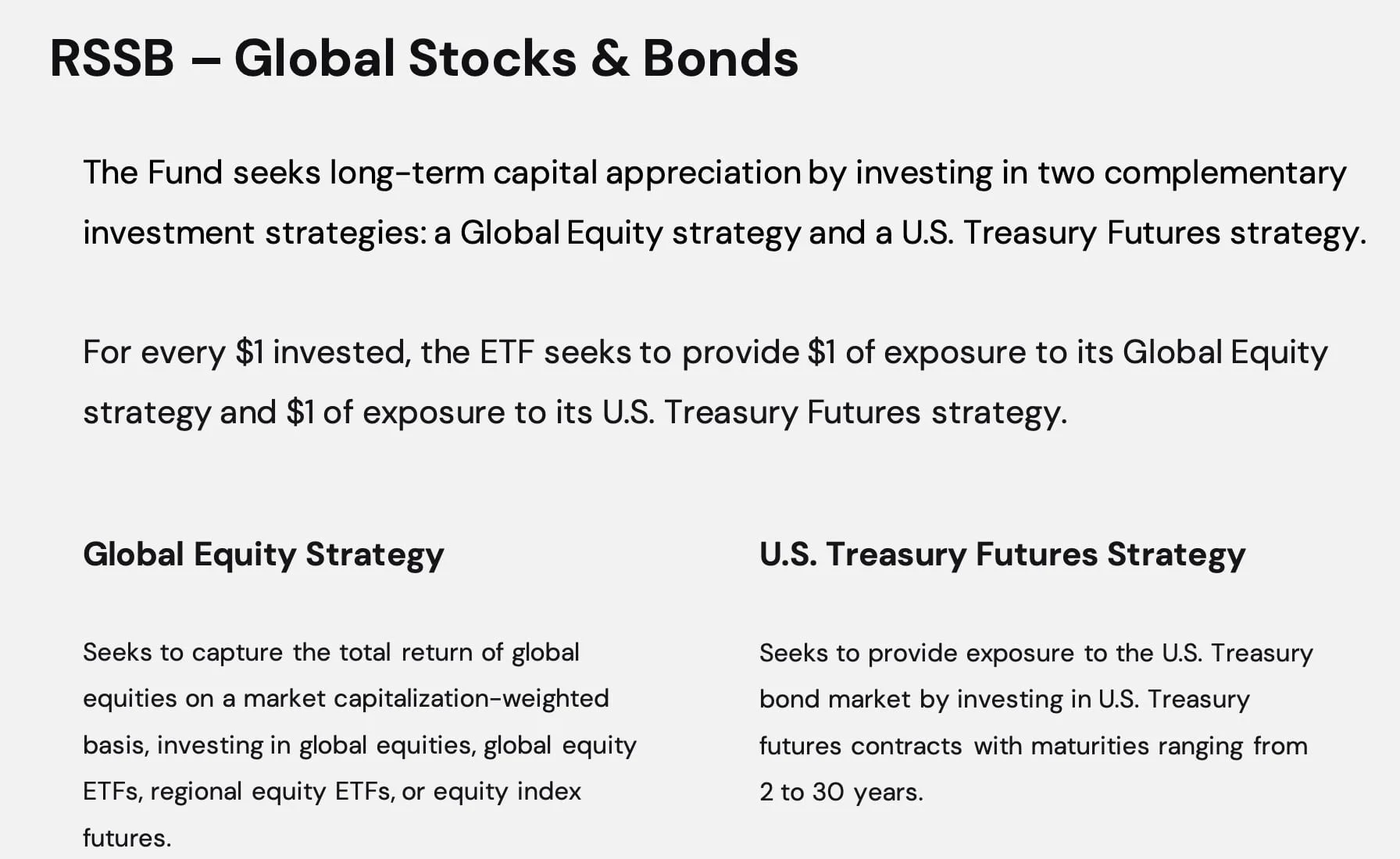
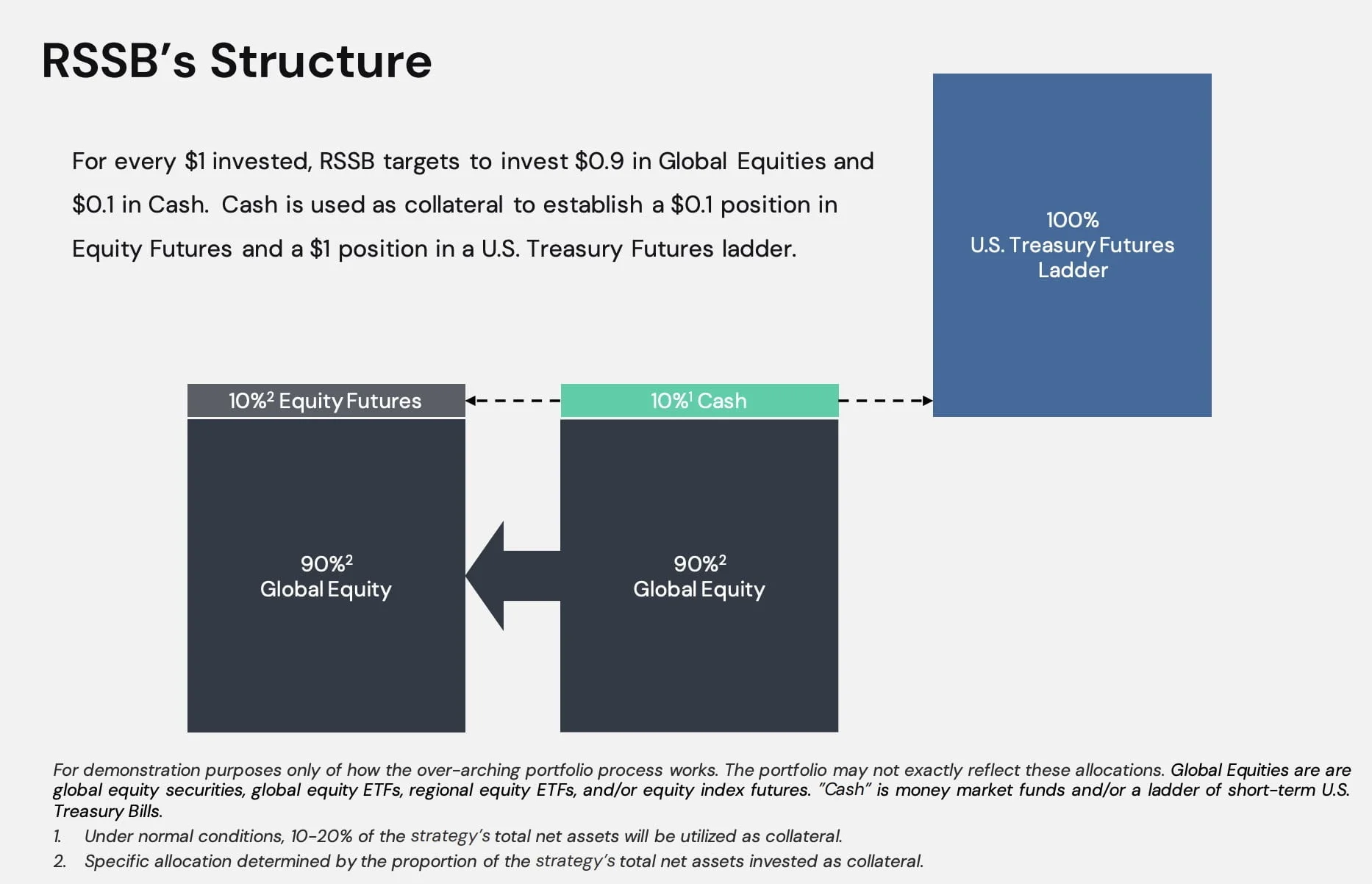
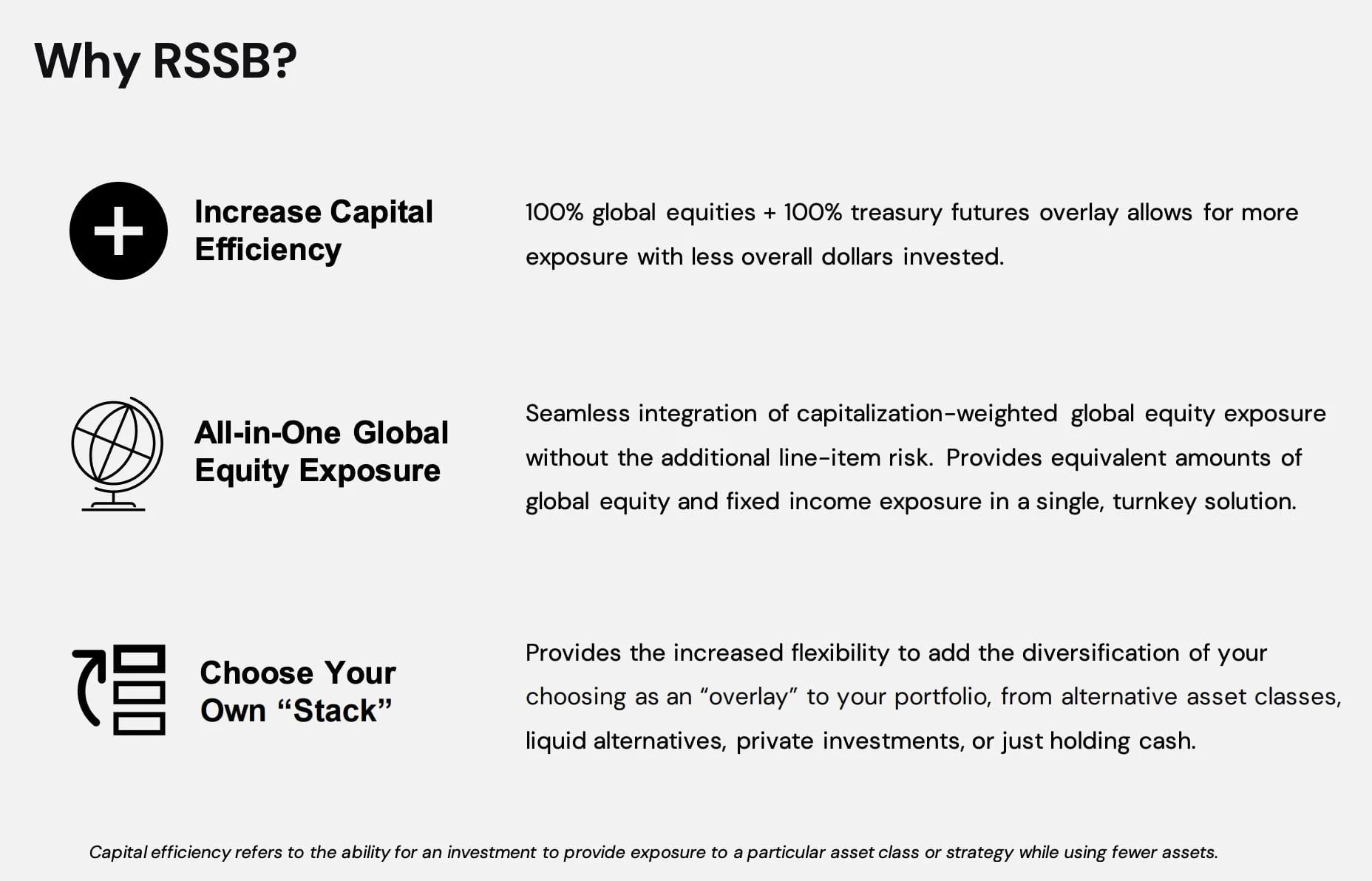









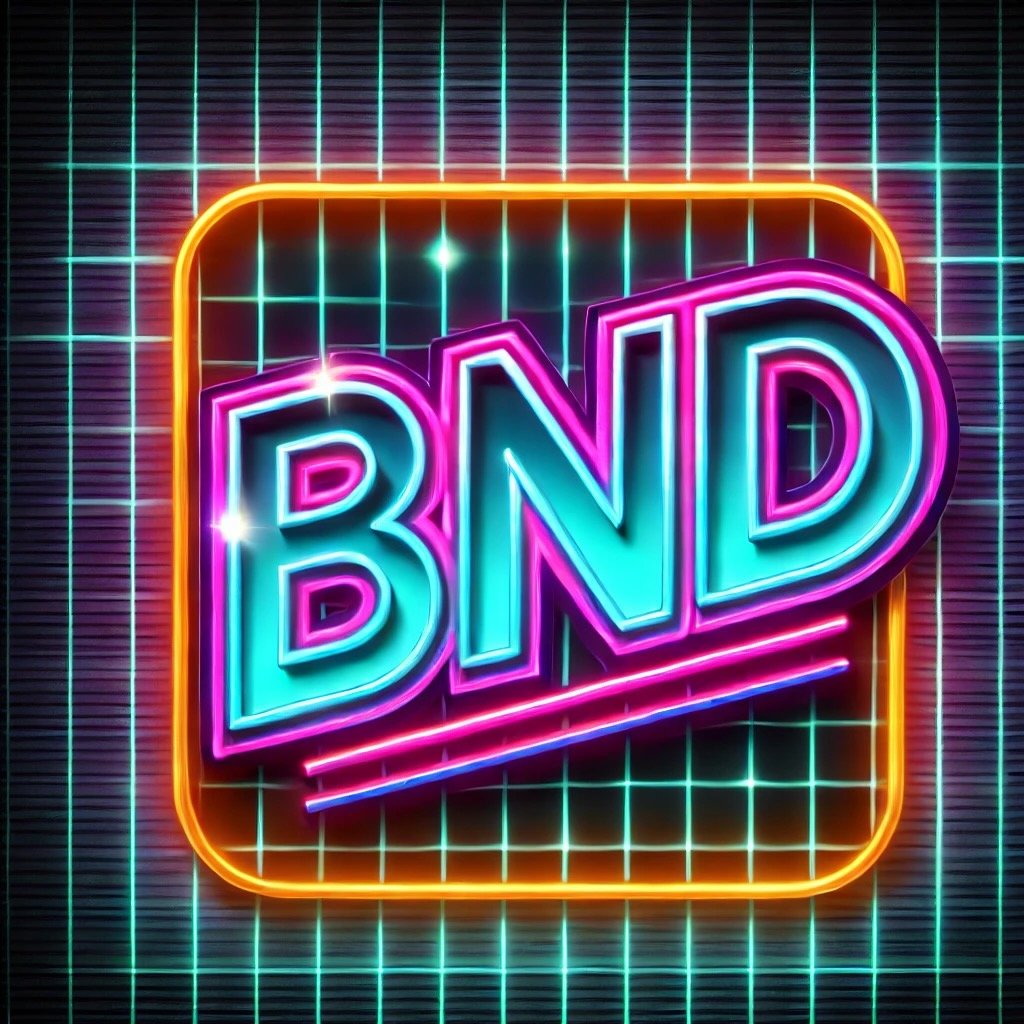



Great review!
I would enjoy your thoughts on TFPN, FLSP, and maybe an expanded one on QIS. Thanks!
I’m interested in the return stacked funds but would like a better understanding of the math of how the leverage works. For instance, if over a long time frame the stocks earned 10% and bonds 5% I should not expect of CAGR of 15% given the cost of borrowing and fees. So what should I expect? Do you have any articles on this topic? Any help or articles you can guide me too would be greatly appreciated.
Have you considered buying treasury futures directly? This would allow for a DIY returned stacked portfolio where the 100% equity side can be whatever you want, not just global MCW. Would be really interested to read your thoughts.